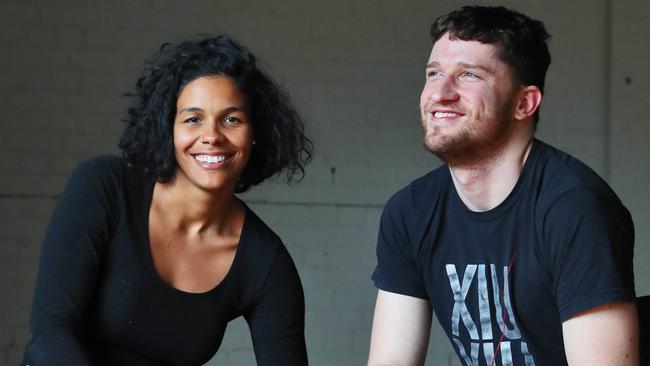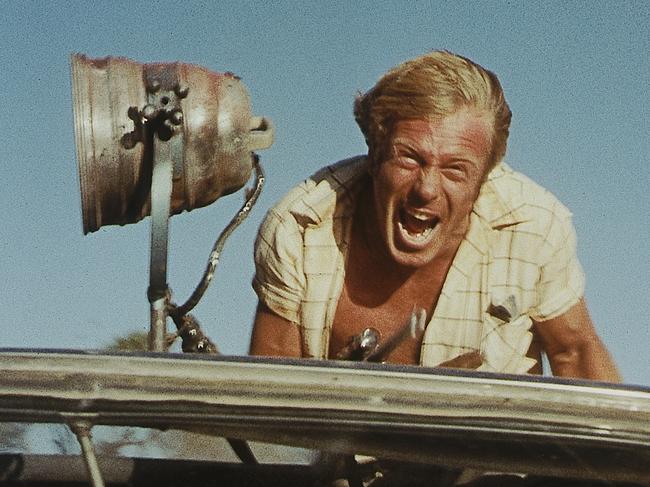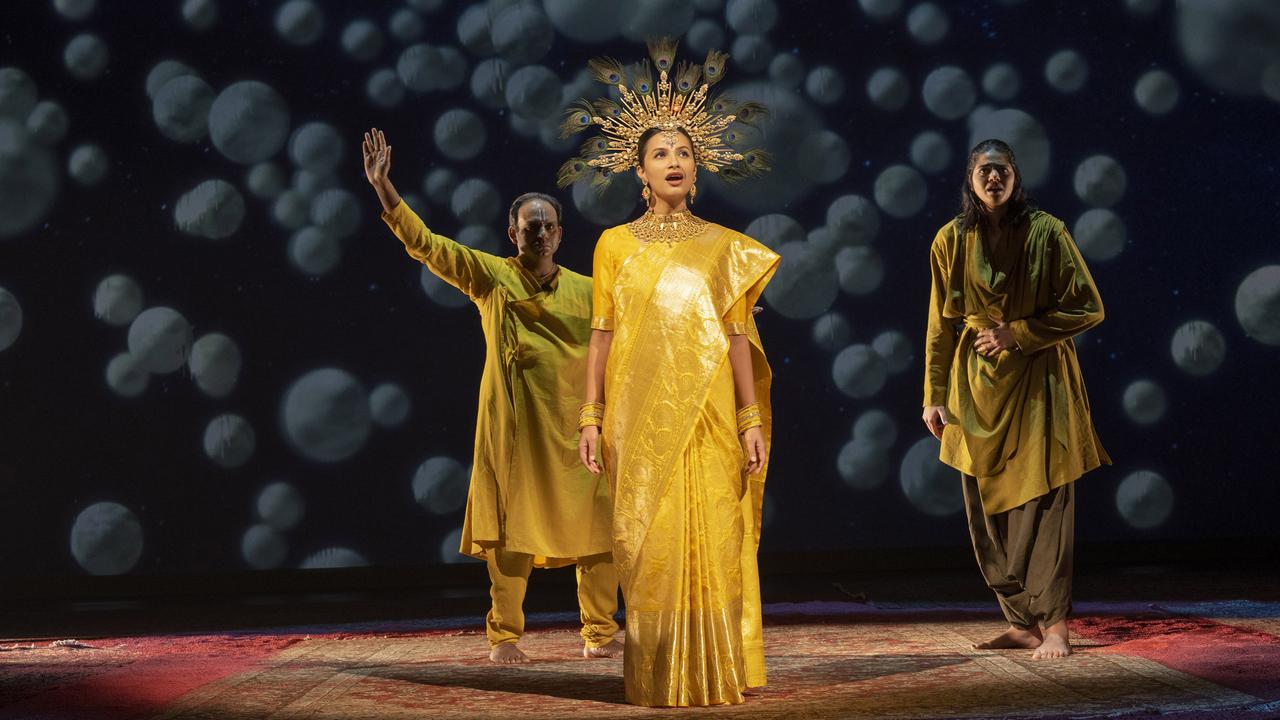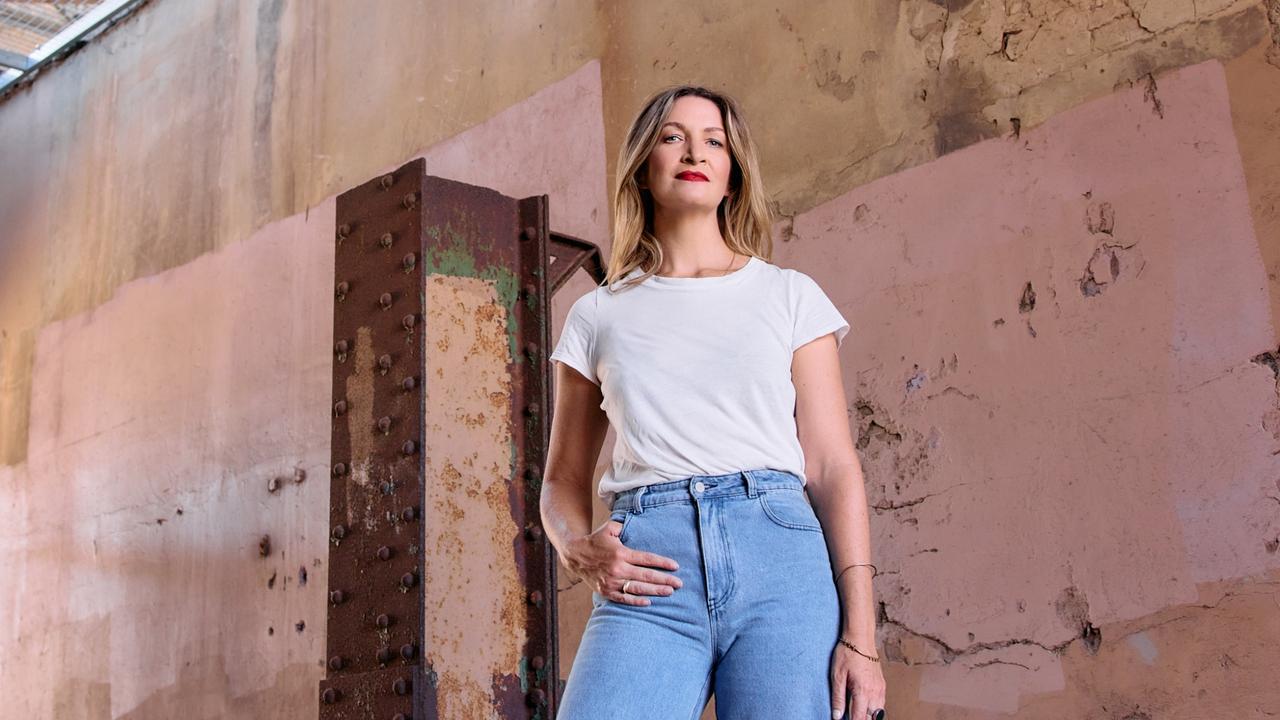A town like the Yabba: Zahra Newman stars in stage version of Wake in Fright
Wake in Fright, an Aussie gothic classic, moves to the theatre stage.

At an early Australian screening of Wake in Fright, an audience member leapt up and shouted: “That’s not us!” The 1971 film paints a dystopian picture of booze-soaked male behaviour in the fictional outback town of Bundanyabba.
The critically acclaimed movie is based on Kenneth Cook’s 1961 novel of the same name. Both feature John Grant, a young schoolteacher forced to pay off his bond by teaching in a remote rural school.
In his endeavour to get to Sydney for the Christmas holidays, he gets caught up in a seemingly jovial but increasingly menacing local world of drinking, gambling and bloodlust.
Today we might call it toxic masculinity; then, it was just having a bloody good time.
The ugly underbelly of mateship and bush hospitality is what drew playwright and director Declan Greene to the novel and made him want to adapt it for the stage. That and the almost gothic menace of the parched landscape. It’s a creeping fear that needs to be felt viscerally, he explains.
“Wake in Fright is a horror story and it’s much more effective to allow the audience to experience this in their minds,” he says. “The heat, expanse, the insane pressure it puts on people that causes monstrous behaviour … you can’t communicate something like that visually, this horror. It has to be a leap of imagination.”
And there are lots of demands on the imagination. His one-person, pared-back version for Melbourne’s Malthouse Theatre stars Zahra Newman playing all the characters.
The show relies predominantly on lighting, by Verity Hampson, and especially sound — Nicholas Brown composed and James Paul has plotted the sound design involving more than 1000 elaborate sound cues — to create the world of the Yabba, the locals’ name for the town that no one seems able to leave.
Greene says watching Newman in rehearsal is “Olympian” as we see her transform into clean-cut Grant, trapped in the town’s pub and being pressured into having another beer.
“I need food, I haven’t eaten in 10 hours,” the character says in reasonable, desperate tones.
“Never does you any harm, a few cheeky beers on a school night,” responds Jock Crawford, the hospitable, bullying local copper. As Jock, Newman seems bigger, her manner menacingly jocular.
She’s also Tim Hynes, a local mining director, his adult daughter Janette and crazy “Doc” Tydon, a vagrant medic.
Casting the multi-talented Newman (her main-stage CV includes Chekhov and Shakespeare as well as The Book of Mormon) homes in on the novel’s theme of alienation and the “othering” of those who aren’t deemed part of the mainstream.

Greene argues that this process is prevalent in how white Australia as a nation treats those deemed outsiders, whether migrants or its own indigenous population.
“Wake in Fright is a work highly critical of the culture it depicts, this very insular, parochial, mainstream Australian culture,” Greene says.
In the book and film, the “othering” of its protagonist is due to his urban, educated identity (in the film he’s also English). For Newman, who as a 15-year-old arrived in Brisbane from Jamaica with her mother, the way she feels about her own identity is, she says, secondary to the way she was and is perceived by others.
“(Moving here) was a massive cultural shock,” she says, “as were the compromises I had to make linguistically, behaviourally, culturally. Assimilate or suffer, there was no choice.”
It has helped her as an actress and, she hopes, will push audience members to confront their own conscious or unconscious tendencies of alienation.
“The fact that I am a woman and an immigrant means that there’s already a lens enabling the audience to receive the information differently than if a cis-gendered white Australian man was doing it,” she says.
The fact Grant is complicit in his own downfall pushes back against the tendency to cast outsiders as perfect victims or villains, says Greene. “What I love about him is that he’s arrogant, sneering, thinks he’s smarter and culturally superior, and ends up being destroyed by his hubris.”
But even though he loses everything in a drunken gambling spree, no one is willing to help. “He gets a false contract, just beer, nothing to get him out of his predicament,” Greene says.
The book and film both feature a famous, blood-soaked roo shoot. How are they going to stage that in Melbourne? Greene and Newman laugh. “That was one of our first discussions,” Newman says.
Greene, who is known for his kitsch sensibilities, doesn’t rule out camp props. It has to be in there, he says, because it’s another instance of the contradictions at the heart of how we see ourselves.
“Visitors are shocked because one of very few internationally recognised images of Australia is the kangaroo,” he says. “It’s on our crest. So a roo shoot looks like something sacred being massacred even though we see them as pests.”
And you have to ask, he says: “What other country kills and eats its crest?”
Wake in Fright opens at the Malthouse Theatre, Melbourne, on June 26.


